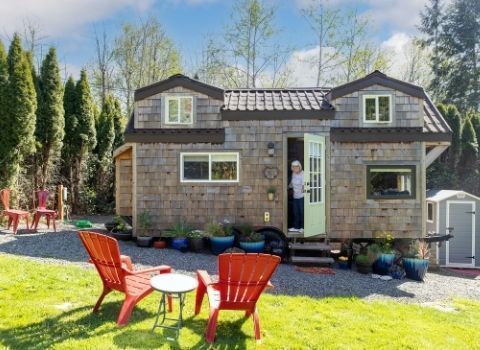
Tiny home sales have been on the rise for the past few years, but are they a smart option for eco-minded homeowners? Let’s talk about tiny homes and their effect on the environment.
They Use Fewer Materials
A home under 400 square feet will need fewer building materials than the average home, which is over 2,000 square feet. Fewer materials means that fewer trucks are required to transport the materials. A tiny house also won’t need as many materials for repairs, which provides additional environmental and financial savings.
They Reduce Energy Use
A tiny home has fewer energy needs due to its small size and fewer appliances. The average-size home uses many resources every single day for heating and cooling and other electricity needs. Carbon emissions result from the use of fossil fuel-based energy, which is the most significant contributing factor to climate change. A single-family home can emit up to 28,000 pounds of carbon dioxide in a year. In comparison, a tiny house typically emits up to 2,000 pounds a year.
They May Use Sustainable Materials
Using sustainable materials to build a tiny home is a realistic option for two reasons. The first is that recycled materials are typically available in limited quantities, which might rule out their use for the average single-family home. The second reason is that the newest sustainable materials available may have a high price point, causing them to be out of reach for large homes but affordable for tiny houses.
They Make No Sacrifices Going Green
The term “sustainable living” is often associated with feeling like you’ll have to live without, which simply isn’t true. You can live in a tiny home without sacrificing comfort, and you’ll also find out what’s important to you in the process. If you’re thinking it’s time to go smaller, there are other logistics to consider before you purchase a little house. We hope you have learned something about tiny homes and their effect on the environment.


